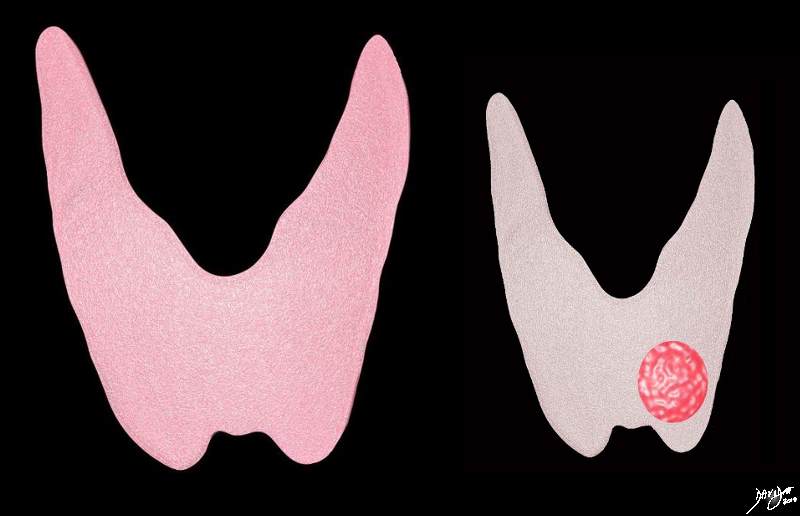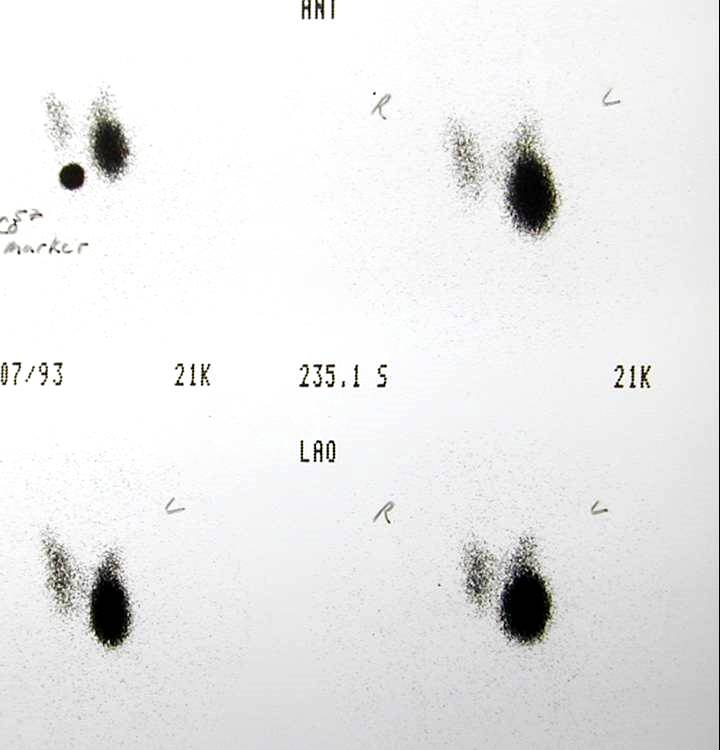The Common Vein Copyright 2010
Definition
Toxic Nodule is a hyperactive hyperactive thyroid nodule that is autonomously functioning. The “toxic” nodule produces and releases increased amounts of thyroid hormone and is unresponsive to TSH and the negative feedback from increased concentration of thyroid hormones in the blood stream. Left untreated, a toxic nodule may lead to hyperthyroidism and thyrotoxicosis.
The most common cause of multinodular goiters internationally is iodine deficiency. Decreased levels of iodine cause thyroid hormone deficiency which leads to increased levels of TSH. High levels of TSH cause compensatory hyperplasia of the thyroid gland and formation of hyperplastic nodules. These hyperplastic nodules are at increased risk for somatic genetic mutations that can lead to an autonomously hyperfunctioning nodule.
Structural changes seen include atrophy of the thyroid gland and the nodule if large may be palpable or visible. Functional changes of a toxic nodule are autonomous increased thyroid hormone production. Clinically patients may present with a palpable thyroid nodule or with the sequela of hyperthyroidism.
Imaging of all nodules is important to determine risk of malignancy. Ultrasound may show whether a lesion is solid, cystic, or a combination. Ultrasound has also been found to be useful in determining characteristics of a nodule that are worrisome for thyroid cancer. Thyroid scintigraphy may clearly demonstrate a “hot” nodule which supports the diagnosis of a benign lesion. CT or MRI can be used to evaluate trachea or esophageal compression. Diagnosis is best made with thyroid scintigraphy showing a hyperactive thyroid nodule.
Treatment of toxic nodules depends on the clinical scenario. Patients who are euthyroid may be able to be observed. Patients with overt hyperthyroidism can be treated with medication, radioactive iodine, or surgery.

Normal Gland And Gland with Toxic Nodule |
|
The diagram outlines a normal gland on the left (pink) and an abnormal gland with a toxic hypefunctioning nodule in the left lobe (red). As a result of its hyperfunction it supresses the rest of the gland which becomes atrophied and the color gray reflects this lack of function. Courtesy Ashley Davidoff MD copyright 2010 all rights reserved 93852.d.8d.8s |

Hot Nodule |
|
The patient presents with hyperthyroidism and a thyroid scan shows a hot nodule in the lower pole of the left lobe. This finding is consistent with a toxic nodule with suppression of th remaining gland CODE thyroid nodule toxic thyroid scan hyperthyroidism nuclear medicine nodule toxic Image Courtesy Barry Sacks MD 99422 |
